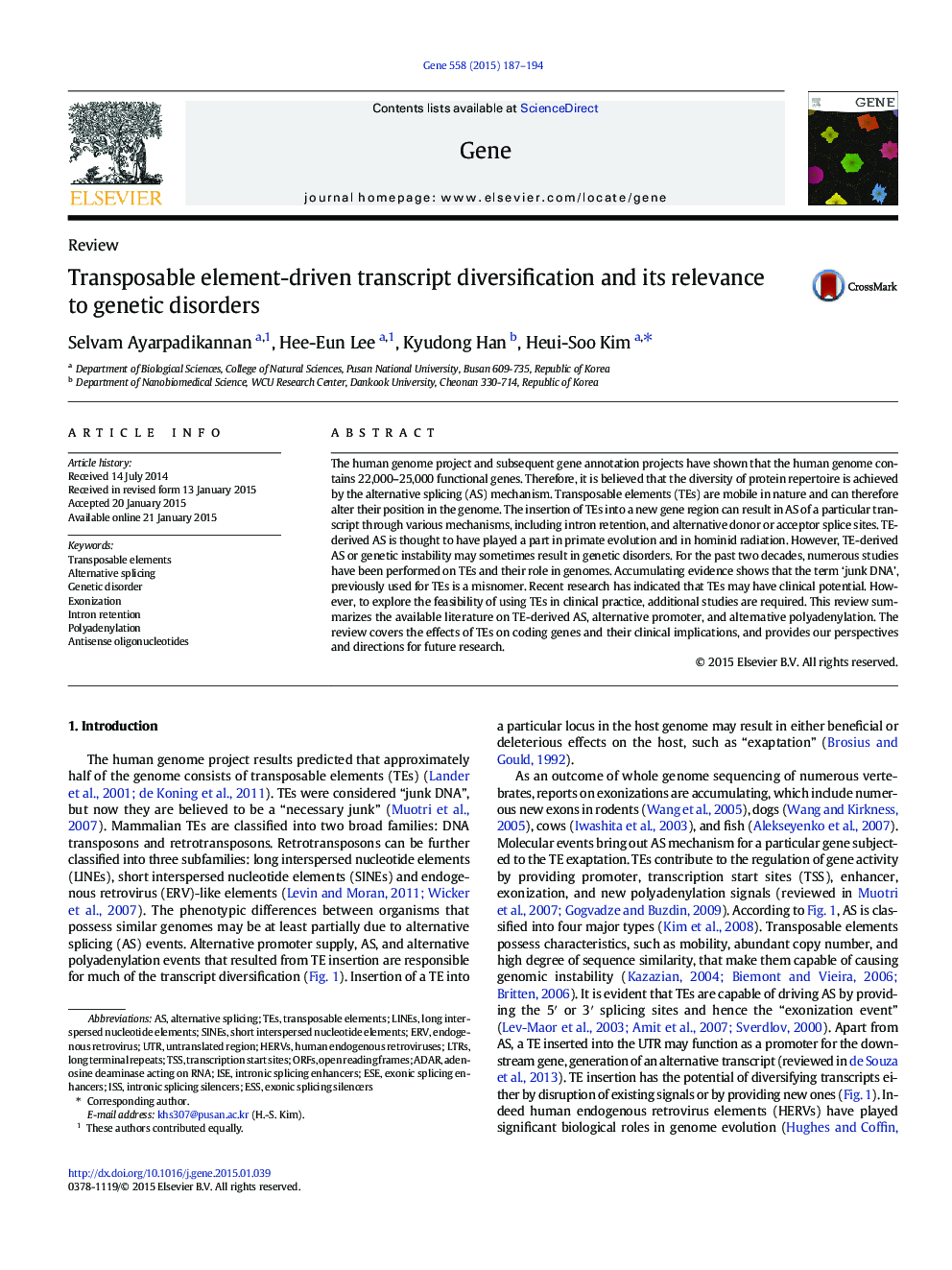| Article ID | Journal | Published Year | Pages | File Type |
|---|---|---|---|---|
| 2815893 | Gene | 2015 | 8 Pages |
•The review covers transposable element (TE) derived transcript diversification.•It covers genomic instability and genetic disorders by TE insertions.•We have given future directions for the identification and treating genetic disorders due to TE.
The human genome project and subsequent gene annotation projects have shown that the human genome contains 22,000–25,000 functional genes. Therefore, it is believed that the diversity of protein repertoire is achieved by the alternative splicing (AS) mechanism. Transposable elements (TEs) are mobile in nature and can therefore alter their position in the genome. The insertion of TEs into a new gene region can result in AS of a particular transcript through various mechanisms, including intron retention, and alternative donor or acceptor splice sites. TE-derived AS is thought to have played a part in primate evolution and in hominid radiation. However, TE-derived AS or genetic instability may sometimes result in genetic disorders. For the past two decades, numerous studies have been performed on TEs and their role in genomes. Accumulating evidence shows that the term ‘junk DNA’, previously used for TEs is a misnomer. Recent research has indicated that TEs may have clinical potential. However, to explore the feasibility of using TEs in clinical practice, additional studies are required. This review summarizes the available literature on TE-derived AS, alternative promoter, and alternative polyadenylation. The review covers the effects of TEs on coding genes and their clinical implications, and provides our perspectives and directions for future research.
